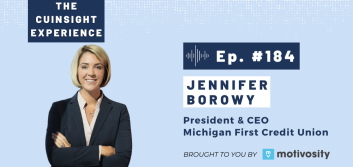Millennials needed at front line of credit union movement

The way in which the world accesses money is on the brink of change. By 2030, 2 billion people without a bank account today will store money and make payments on their phones, according to the 2015 Gates Annual Letter. During this shift, millennials (defined as anyone born from approximately 1980–2000) will carry the bulk of responsibility to accelerate the credit union movement. As early adopters, they are the ones evoking the “disruption” in the first place:
- A Scratch study found that 73% of millennials would be more excited about a new financial service offer from Google, Amazon, Apple, Paypal or Square than from their own bank.
- Fifty-two percent of millennials rank far above or above average as early adopters of technology.
In addition, the world’s 2.5 billion millennials are currently experiencing some of the biggest transitions of their lives. Their financial needs are transitioning as they leave school, change employment or make larger purchases like a car or home. This generation will soon become the future financial services business’ largest source of revenue. For these reasons, millennials need to be at the front line of promoting credit unions’ unique ability to meet their transitional needs.
But how can they if they don’t know what credit unions are?
This is why World Council began a global networking initiative called weCU2, which connects millennials, technology experts and credit unions under one digital hub. Michael Mori, a millennial research fellow for the MasterCard Center for Inclusive Growth, recently explained on a weCU2 interview that credit unions are a “natural” place for millennials to bank, but many don’t use them because:
1) They don’t know about credit unions;
2) They don’t understand their social value; and
3) It’s easy to use the same bank account their parents set up for them earlier in life.
In other words, once millennials start careers, set up account(s) and become more financially stable, enticing them to switch becomes much, much harder.
So, what’s the difference?
“None of the big banks have made a public shift from selling credit to empowering human endeavor,” says Scratch Executive Vice President Ross Martin.
Credit unions can empower young adults in ways never seen before; but they need to effectively communicate how they are different from banks. Investment in innovation and communicating the credit union difference to millennials must be top priorities.





